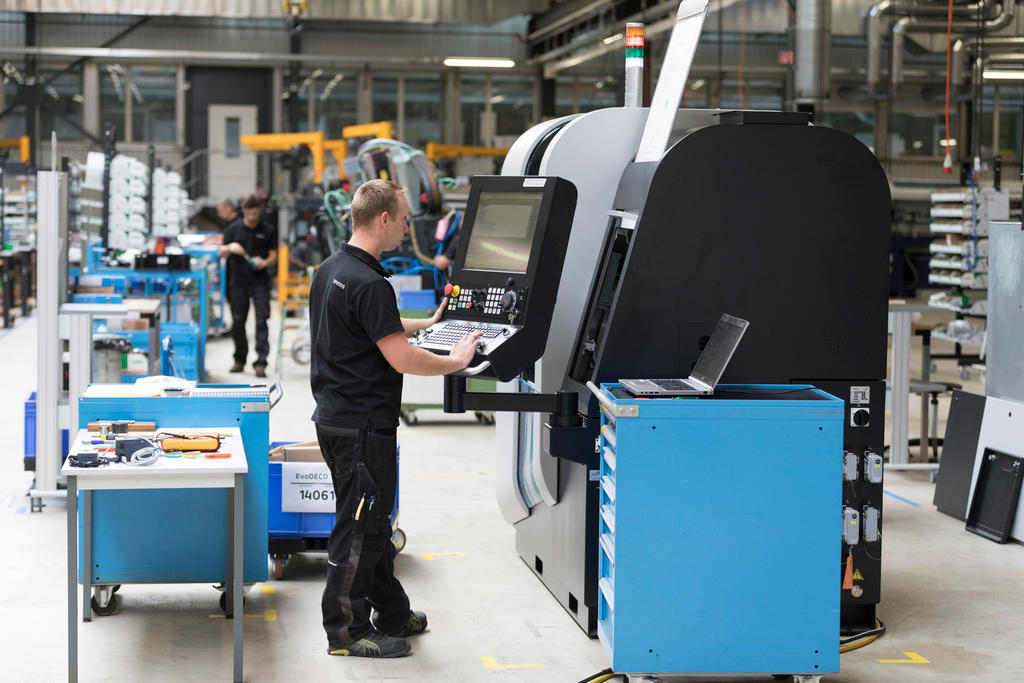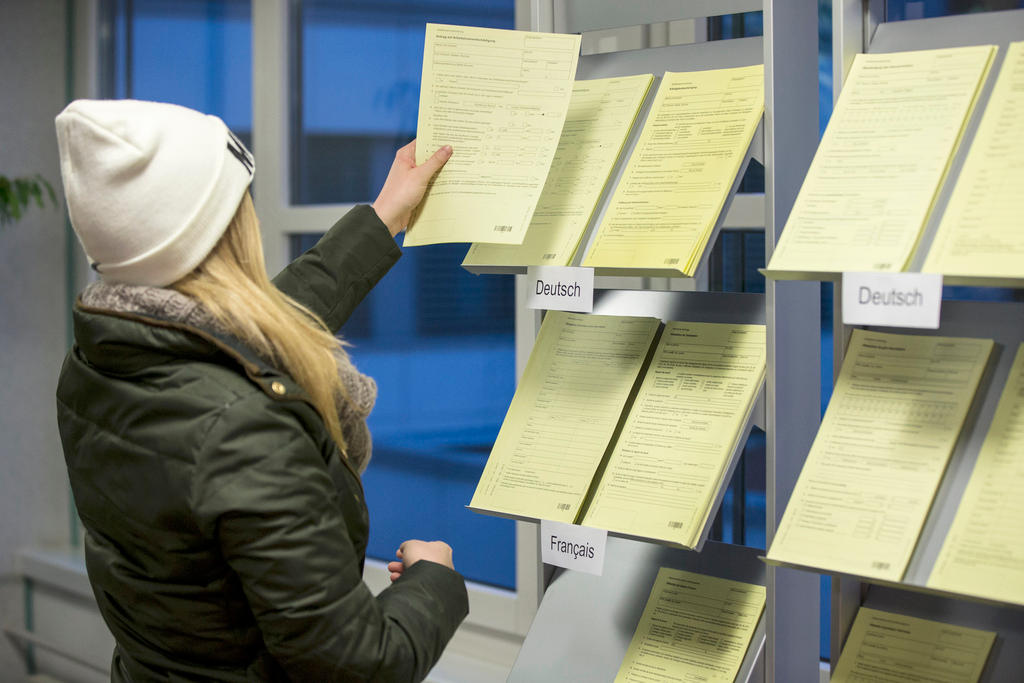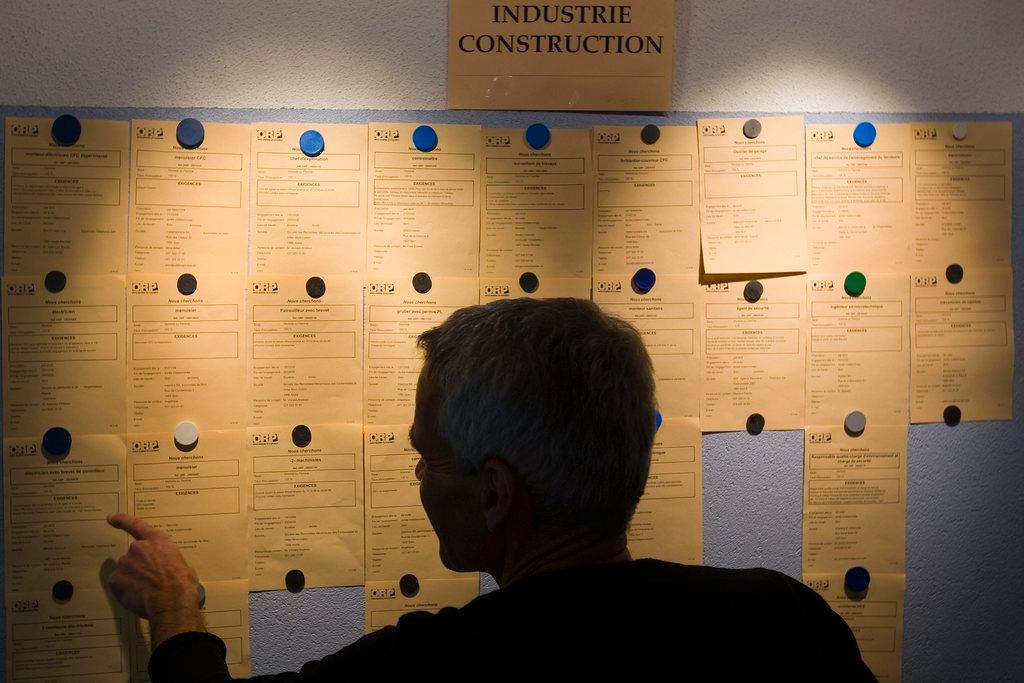Report finds partial unemployment saves jobs in times of crisis

A reduction in work hours, topped up by partial unemployment benefits, is not only a means of saving jobs but also of cutting the overall costs of unemployment payments, finds a study mandated by the State Secretariat for Economic Affairs (SECO).
In 2009, Swiss industry was severely hit by the spillover effects of the subprime crisis raging through the United States. In the Swiss machine tools sector, revenues fell by an average of 70%.
“It was dramatic. In 30 years working in this area, I had never seen such a sudden crash”, remembers Rolf Muster, boss of the Schaublin Machines in the Bernese Jura region.
The economics minister at the time, Doris Leuthard, was under pressure to act. She quickly decided to ease the conditions for receiving partial unemployment benefits, lengthened the period of insurance cover from 12 to 18 months, then extended this to 24 months a year later.
“Leuthard strongly encouraged businesses to use this instrument,” remembers Daniel Lampart, first-secretary of the Swiss Trade Union Federation. “Politicians showed a generous attitude and were willing to be flexible to combat the extent of the crisis”, says Pierluigi Fedele, industry specialist at another trade union, Unia.
In 2009, over 90,000 employees were placed on partial unemployment in Switzerland – an unheard-of number. In the most industrialised parts of the country, the system was used on a huge scale: in cantons Jura and Neuchâtel, over 10% of all active workers received benefits due to a reductionExternal link of their work hours.
During an economic crisis, when a business faces a downturn in demand, it can – as long as the staff concerned are in agreement – reduce working hours. In these cases, the employees will receive benefits from the state coming to 80% of the lost revenue. So, if the employer reduced the work-rate from 100% to 50%, the business would pay one-half of the salary, the unemployment insurance would pay 80% of the other half, and the employee would end up receiving 90% of his or her initial salary.
Is it effective?
Of course, such a system comes at a cost: some CHF1.1 billion ($1.16 billion) was paid out by the system of unemployment benefits in the year 2009 alone.
And until now, doubts have persisted as to how effective this anti-crisis tool really is. Some studies have criticized programs of reducing work hours for not preventing lay-offs, but rather delaying them until a later date. Another danger is that companies could apply for benefits claiming to save jobs that they would have kept in any case, even without aid.
A new analysisExternal link (French), however, undertaken by the federal technology institute Zurich (ETH) and mandated by SECO, serves to mitigate these fears. Between 2009 and 2015, the system of partial unemployment was consistently responsible for preventing layoffs in the country, and enabled some companies to save at least 10% of positions, say co-authors Daniel Kopp and Michael Siegenthaler.
As a direct consequence, they claim, the costs borne by the system of partial unemployment were largely offset by the savings made in the regular system of unemployment.
Holding on to know-how
Overall, the system of shorter work hours topped up by state benefits is supported by a large consensus of stakeholders: it is encouraged by all social partners and receives support from both sides of the political spectrum. It’s hardly surprising that employers and union-leaders alike have welcomed the findings of the report.
“This proves that we are dealing with an effective and well-targeted instrument,” says Philippe Cordonier from SwissmemExternal link, an umbrella body representing machine, electrical, and metal industries in Switzerland. By enabling businesses to keep qualified workers on a reduced basis, “we avoid losing valuable know-how, the risk being that qualified people could definitively leave their industry in case of layoffs”, he says.
As the report authors underline, it is primarily small and medium-sized enterprises (SMEs) that have made most use of the instrument. “Big groups are more inclined to take quick and brutal decisions when business starts to deteriorate,” says UNIA’s Fedele. “The partial unemployment scheme is not adapted for this type of management.”
But if the method was largely effective during the economic crisis of 2009-2010, it was less so during the shock that followed the ending by the Swiss National Bank of its longstanding ceiling of CHF1.20 to the euro in January 2015.
Pierluigi Fedele explains why: “the system of partial unemployment is set up to tackle temporary drops in activity. However, during the euro crisis, firms did not necessarily have less work; rather, they found themselves in difficulty due to the big downturn in profit margins. Despite a certain flexibility on behalf of the authorities, the system was less used.”
OECD-endorsed
More broadly, the system of partial unemployment benefits has been noticed and encouraged by voices beyond Switzerland: in 2009, for example, Pascal Lamy, the then-director of the World Trade Organisation (WTO), told the newspaper Le Temps that the system, widespread in Europe, was a key factor in protecting the continent in times of crisis – as opposed to the US, where such a system is not practiced.
Similarly, for some years the Organisation for Economic Cooperation and Development (OECD) has also been lauding the benefits of a system it sees as more effective than any other type of protectionist measure. As for the most recent Swiss report, it will “surely be scrutinised closely by OECD management, who are keen to develop the system in other countries”, says Daniel Lampart of the Trade Union Federation.
Translated from French by Domhnall O’Sullivan, swissinfo.ch

In compliance with the JTI standards
More: SWI swissinfo.ch certified by the Journalism Trust Initiative






You can find an overview of ongoing debates with our journalists here. Please join us!
If you want to start a conversation about a topic raised in this article or want to report factual errors, email us at english@swissinfo.ch.